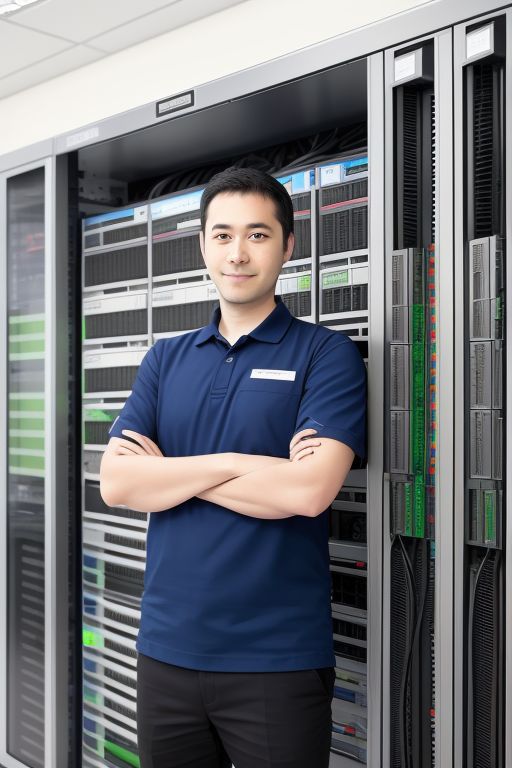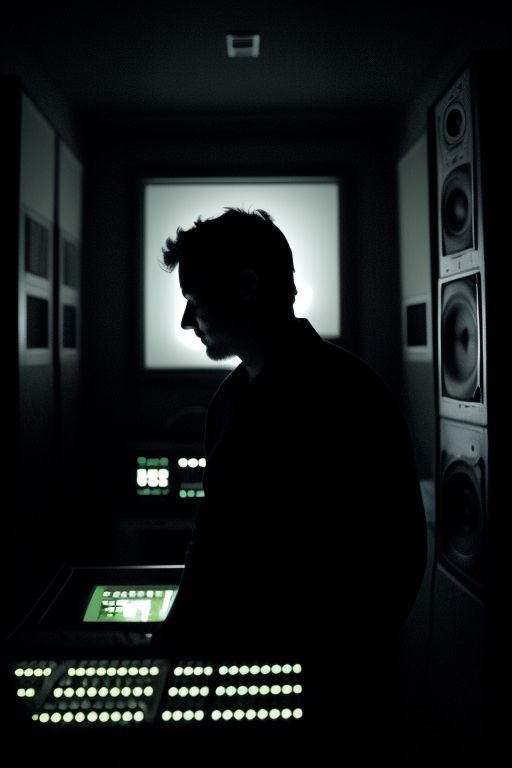The Editor plays a crucial role in shaping the final output of a program. Editors are responsible for assembling, trimming, and refining raw footage into a polished and coherent final product. This involves selecting the best shots, adding transitions, synchronizing audio, and incorporating graphics and special effects to enhance the narrative. This article delves into the diverse responsibilities of an Editor, highlighting their significance, required skills, and the impact they have on the overall production.
The Role of an Editor in Broadcast
An Editor is tasked with transforming raw footage into a finished product that aligns with the director’s vision and meets the broadcast’s quality standards. They work closely with directors, producers, and other post-production staff to ensure the final product is engaging and professional. Here’s a detailed look at their key responsibilities:
- Pre-Production Planning
- Understanding the Vision: The Editor collaborates with the director and producer to understand the creative vision and narrative structure of the broadcast. This includes discussing the desired style, pacing, and any specific editing techniques that will be used.
- Setting Up Workflows: They set up the editing workflow, including organizing files, creating project templates, and configuring editing software to ensure an efficient post-production process.
- Editing Process
- Reviewing Footage: The Editor reviews all raw footage, logging and organizing clips to identify the best shots that will be used in the final edit. They make notes on key moments and potential issues.
- Assembling the Edit: They create an initial rough cut by assembling selected clips in a sequence that follows the script or storyboard. This involves cutting, trimming, and rearranging footage to build the basic structure of the broadcast.
- Fine-Tuning: The Editor refines the rough cut by adding transitions, effects, and adjusting the timing of cuts to enhance the flow and pacing. This stage involves detailed adjustments to ensure smooth continuity and visual appeal.
- Synchronizing Audio: They ensure that audio tracks are synchronized with the video, including dialogue, sound effects, and music. This includes adjusting levels, removing noise, and enhancing audio quality.
- Post-Production Enhancements
- Adding Graphics and Effects: The Editor incorporates graphics, titles, lower thirds, and other visual elements to enhance the broadcast. They may also add special effects to achieve the desired aesthetic.
- Color Correction: They perform color correction and grading to ensure visual consistency and to enhance the overall look of the footage. This involves adjusting exposure, contrast, saturation, and color balance.
- Final Review and Adjustments: The Editor reviews the final cut with the director and producer, making any necessary adjustments based on feedback. They ensure that the final product meets all technical and creative standards.
- Output and Delivery
- Exporting the Final Product: The Editor exports the final edited product in the required format for broadcast, ensuring that it meets the technical specifications of the broadcast platform.
- Archiving: They organize and archive project files, ensuring that all assets are stored securely and can be accessed for future use.
Key Skills Required for an Editor
Being an effective Editor requires a combination of technical proficiency, creative skills, and attention to detail. Here are some of the most critical skills needed:
- Technical Proficiency: Editors must be proficient with editing software such as Adobe Premiere Pro, Final Cut Pro, Avid Media Composer, and DaVinci Resolve. They should also understand various video formats, codecs, and export settings.
- Creative Vision: A strong sense of storytelling and visual aesthetics is essential to create engaging and compelling edits that align with the director’s vision.
- Attention to Detail: Precision and attention to detail are crucial to ensure that all cuts, transitions, and effects are smooth and that the final product is polished.
- Problem-Solving: The ability to troubleshoot technical issues and find creative solutions to editing challenges is vital.
- Communication: Effective communication with the director, producer, and other post-production staff is necessary to ensure that the final product meets all expectations and requirements.
The Impact of an Editor
The Editor’s role is central to the overall quality and success of a broadcast. Their work directly influences the coherence, pacing, and visual appeal of the final product. Here are some ways Editors make a significant impact:
- Narrative Coherence: By selecting the best shots and arranging them effectively, Editors ensure that the story is told clearly and compellingly.
- Visual and Audio Quality: They enhance the visual and audio quality of the footage, ensuring that the final product is professional and engaging.
- Pacing and Flow: Editors control the pacing and flow of the broadcast, making sure that it maintains viewer interest and delivers the intended emotional impact.
- Creative Enhancement: Through the use of graphics, effects, and color correction, Editors enhance the overall aesthetic and production value of the broadcast.
The Editor’s Workflow in Broadcast Production
To understand the role of an Editor, it’s essential to look at their workflow in detail, from pre-production to post-production.
- Pre-Production Phase
- Collaborative Planning: The Editor collaborates with the director and producer to understand the creative vision and set up the editing workflow.
- Organizing Assets: They organize all raw footage and project files, creating a system that allows for efficient and effective editing.
- Production Phase
- Review and Selection: The Editor reviews all raw footage, selecting the best shots and logging key moments for use in the edit.
- Rough Cut Assembly: They create a rough cut by assembling selected clips in a sequence that follows the script or storyboard.
- Refinement: The Editor refines the rough cut by adding transitions, effects, and making detailed adjustments to enhance the flow and pacing.
- Audio Synchronization: They synchronize audio tracks with the video, ensuring that dialogue, sound effects, and music are well-balanced and clear.
- Post-Production Phase
- Graphics and Effects: The Editor adds graphics, titles, lower thirds, and special effects to enhance the broadcast.
- Color Correction: They perform color correction and grading to ensure visual consistency and enhance the overall look of the footage.
- Final Review: The Editor reviews the final cut with the director and producer, making necessary adjustments based on feedback.
- Export and Delivery: They export the final edited product in the required format for broadcast and organize project files for archiving.
The Evolution of the Editor’s Role
The role of the Editor has evolved significantly with advancements in technology and changes in production methods. Today’s Editors must stay updated with the latest tools and techniques in the industry:
- Non-Linear Editing Systems (NLEs): The use of NLEs has transformed the editing process, providing more flexibility and efficiency in managing and editing footage.
- High-Resolution Formats: The adoption of high-resolution formats such as 4K and 8K requires Editors to handle larger files and ensure high-quality output.
- Remote Collaboration: The ability to collaborate remotely has become increasingly important, allowing Editors to work with teams from different locations.
- Advanced Effects and Compositing: The integration of advanced effects and compositing tools has expanded the creative possibilities for Editors, enabling them to create more complex and visually stunning edits.
Real-World Examples of Editors
To illustrate the impact and responsibilities of Editors, let’s look at some real-world examples:
- News Broadcasting
- Editor’s Role: In news broadcasting, the Editor is responsible for quickly assembling and editing news segments, ensuring that they are accurate, timely, and engaging. They work under tight deadlines to deliver high-quality content.
- Challenges: News editing requires quick decision-making and the ability to work efficiently under pressure. The Editor must ensure that all segments are clear, concise, and free of errors.
- Documentary Production
- Editor’s Role: In documentary production, the Editor shapes the narrative by selecting the best footage, interviews, and archival material. They work closely with the director to ensure that the story is compelling and well-paced.
- Challenges: Documentary editing involves managing large amounts of footage and finding the most effective way to tell the story. The Editor must balance factual accuracy with emotional impact.
- Television Shows
- Editor’s Role: For television shows, the Editor assembles episodes by selecting the best takes, adding transitions, and incorporating graphics and effects. They ensure that each episode meets the creative vision and technical standards.
- Challenges: Television editing requires attention to detail and the ability to work within the constraints of episode length and broadcast schedules. The Editor must ensure that each episode flows smoothly and maintains viewer interest.
Conclusion
The role of an Editor in broadcast is multifaceted and essential to the success of any production. Editors are the professionals who transform raw footage into a polished and engaging final product. Their responsibilities span technical, creative, and collaborative tasks, requiring a unique blend of skills and expertise.
Editors play a crucial role in ensuring high-quality broadcasts, contributing significantly to the overall impact and success of the production. Their work enhances the narrative, engages the audience, and ensures that the production runs smoothly and efficiently.





